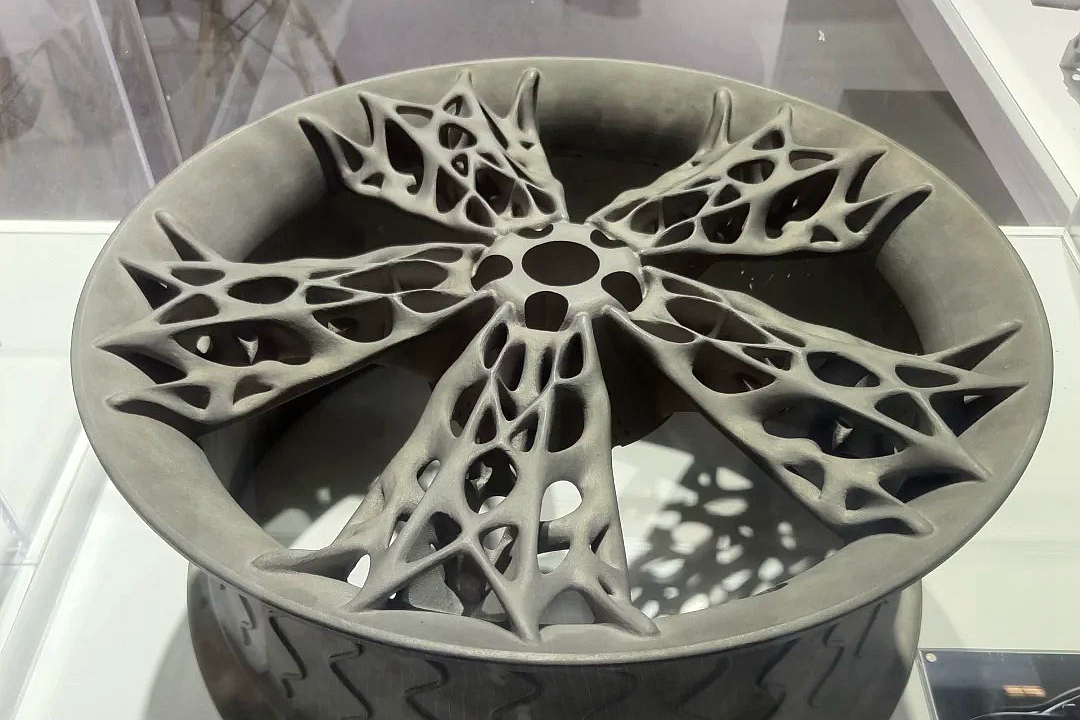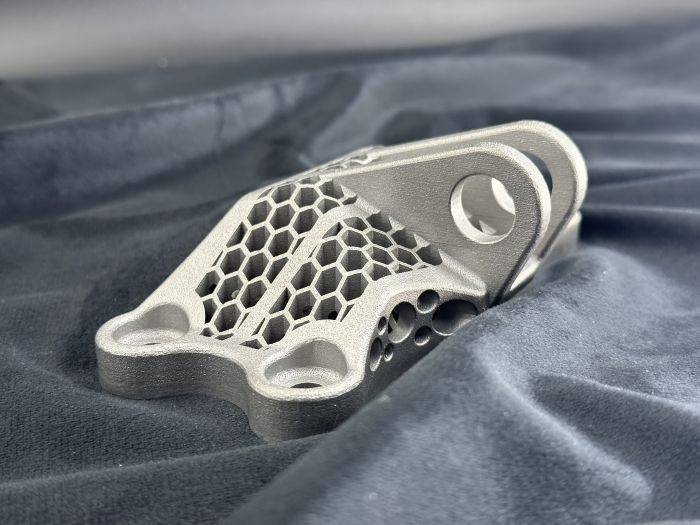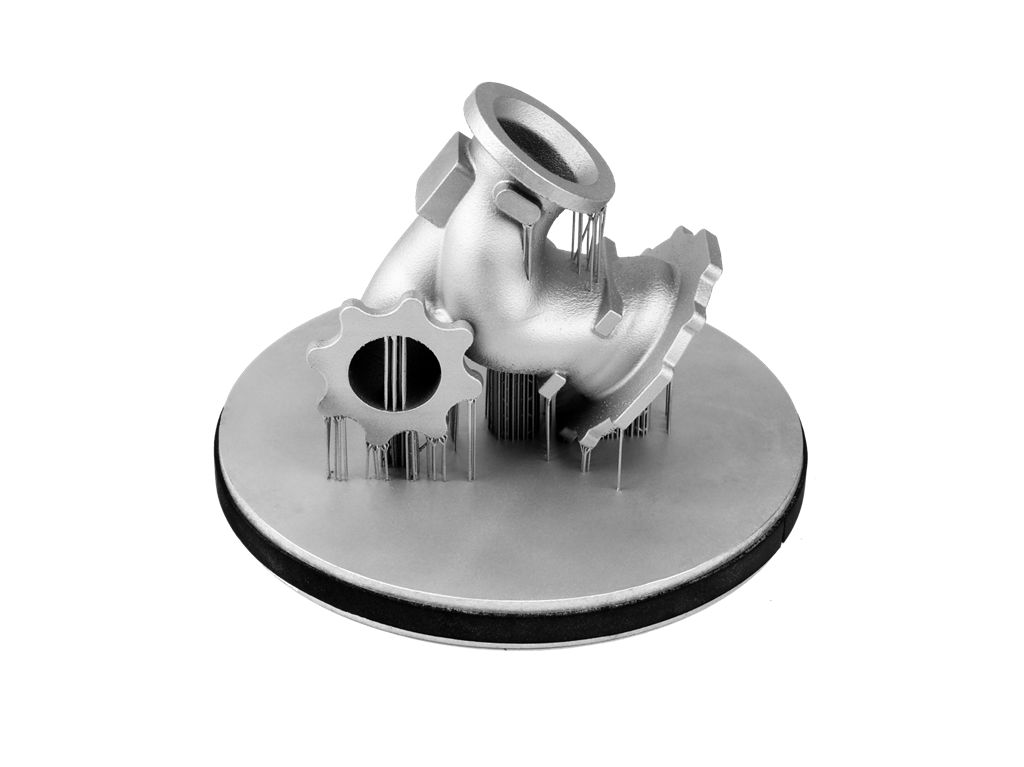What Are The 3D Printing Technologies Used for Titanium Parts Additive Manufacturing?
 Titanium is a high-performance material that is highly valued for its combination of strength, light weight, and corrosion resistance. These characteristics make it an ideal choice for applications in aerospace, medical, automotive, and defense industries, where parts must perform under extreme conditions. Additive manufacturing (AM) technologies have played a significant role in enabling the production of titanium parts with complex geometries, faster production times, and reduced material waste. This blog examines the 3D printing technologies used for titanium parts, focusing on materials, industry applications, and the benefits each technology offers for titanium manufacturing.
Titanium is a high-performance material that is highly valued for its combination of strength, light weight, and corrosion resistance. These characteristics make it an ideal choice for applications in aerospace, medical, automotive, and defense industries, where parts must perform under extreme conditions. Additive manufacturing (AM) technologies have played a significant role in enabling the production of titanium parts with complex geometries, faster production times, and reduced material waste. This blog examines the 3D printing technologies used for titanium parts, focusing on materials, industry applications, and the benefits each technology offers for titanium manufacturing.
Direct Metal Laser Sintering (DMLS)
Direct Metal Laser Sintering (DMLS) is a widely used powder-bed fusion technology in titanium 3D printing. The process involves a high-powered laser that fuses metal powder particles, layer by layer, to form solid titanium parts. This technology is particularly advantageous for producing high-density parts with complex geometries that are difficult to achieve with traditional manufacturing methods.
Materials:
Titanium Alloy Ti-6Al-4V: The most commonly used titanium alloy in DMLS. It comprises 90% titanium, 6% aluminum, and 4% vanadium. Known for its excellent strength-to-weight ratio (up to 900 MPa tensile strength), corrosion resistance, and fatigue resistance, it is widely used in aerospace and medical applications.
Titanium Grade 23 (Ti-6Al-4V ELI): A variant of Ti-6Al-4V with improved ductility and fracture toughness, used primarily in medical implants, hip replacements, and aerospace components.
Titanium Grade 2: Pure titanium with excellent corrosion resistance and moderate strength (around 345 MPa tensile strength), typically used in marine, chemical, and industrial applications.
Applications:
Aerospace: DMLS is ideal for producing lightweight, high-strength components such as turbine blades, brackets, and engine parts, which require performance at high temperatures and pressures. Parts manufactured from Ti-6Al-4V alloy can withstand temperatures of up to 600°C.
Medical: Custom implants, surgical instruments, and dental parts made from Ti-6Al-4V ELI provide excellent biocompatibility and strength. Titanium is often chosen in medical implants because it bonds well with bone tissue.
Automotive: DMLS titanium parts, such as exhaust components, turbochargers, and engine parts, offer significant weight savings and improved performance.
Benefits:
High Material Density: DMLS produces parts with densities approaching 99.9%, ensuring titanium components' strength and mechanical properties remain intact, comparable to parts made through traditional manufacturing.
Complex Geometries: The ability to print intricate internal features like cooling channels or lightweight lattice structures would be impossible or costly with traditional methods.
Minimal Post-Processing: DMLS parts often require minimal finishing work due to the precision of the printing process, which can reduce overall production time and costs.
Selective Laser Melting (SLM)
Selective Laser Melting (SLM) is a metal additive manufacturing technology similar to DMLS but emphasizing achieving fully melted parts with minimal porosity. SLM uses a laser to melt titanium powder in a powder bed, fusing it into a solid structure.
Materials:
Titanium Alloy Ti-6Al-4V: Known for its high tensile strength (up to 1,200 MPa) and high fatigue resistance, Ti-6Al-4V is ideal for aerospace, medical, and high-performance automotive applications.
Titanium Grade 5: A variant of Ti-6Al-4V with improved strength and fatigue resistance, commonly used for critical applications such as aerospace components subject to high stress.
Applications:
Aerospace: SLM is extensively used to manufacture critical components such as turbine blades, heat exchangers, and engine parts requiring high-performance capabilities at elevated temperatures (up to 900°C).
Medical: SLM allows for producing patient-specific implants, such as joint replacements and dental implants, by offering high-resolution and biocompatible titanium parts.
Automotive: High-performance automotive parts, such as lightweight engine components and exhaust systems, benefit from the strength-to-weight ratio of titanium alloy parts produced using SLM.
Benefits:
Fully Dense Parts: SLM produces parts with nearly 100% density, providing superior mechanical strength and ensuring that titanium parts perform optimally in high-stress applications.
Superior Surface Finish: The precision of SLM results in parts that have a smoother surface finish compared to other 3D printing technologies, reducing the need for additional finishing processes.
Enhanced Customization: SLM allows for producing titanium parts with complex shapes and intricate details customized to meet specific design requirements.
Electron Beam Melting (EBM)
Electron Beam Melting (EBM) uses an electron beam in a vacuum to melt titanium powder. EBM is particularly effective for producing dense, high-performance titanium parts used in critical applications where high strength and durability are required.
Materials:
Titanium Alloys Ti-6Al-4V: The most common alloy used in EBM for aerospace and medical applications due to its excellent mechanical properties and ability to withstand extreme environments.
Titanium Grade 5: Offers enhanced strength and is commonly used in high-performance aerospace and medical parts.
Applications:
Aerospace: EBM creates lightweight yet high-strength titanium components such as turbine blades and engine parts that must withstand extreme temperatures and pressures.
Medical: Titanium parts produced by EBM are biocompatible and ideal for orthopedic, dental, and spine surgeries. EBM's precision allows for highly customized, patient-specific implants.
Energy: The energy industry uses EBM to create parts that must perform under extreme pressure and temperature conditions, such as components in power plants.
Benefits:
Superior Mechanical Properties: EBM-produced parts exhibit excellent strength and resistance to fatigue, making them ideal for use in critical aerospace and medical applications.
Minimal Porosity: EBM ensures a high degree of part density with low porosity, resulting in strong and durable parts.
Cost-Efficiency for Medium-Volume Production: EBM offers a cost-effective solution for producing low- to medium-volume batches of titanium parts, making it suitable for industries that require both performance and volume flexibility.
Material Extrusion (FDM) for Titanium Alloys
Although less common for high-performance applications, Material Extrusion (Fused Deposition Modeling, or FDM) is emerging as a viable technology for titanium alloy 3D printing. This process typically uses filament-based material, and some specialized filaments containing titanium alloys can be used in FDM to produce low-cost, non-structural titanium parts.
Materials:
Titanium Alloys: Specialty titanium filament composites can be used for low-performance parts, primarily for prototyping and low-stress applications.
Applications:
Prototyping: FDM can produce quick prototypes of titanium parts, allowing for early-stage design testing before moving to more expensive processes like DMLS or SLM.
Low-Performance Applications: FDM with titanium composites is suitable for applications where high strength is not the primary requirement.
Benefits:
Cost-Effective: FDM offers a more affordable method for prototyping titanium parts, especially in the early stages of product development.
Ease of Use: FDM technology is widely available and easy to operate, making it accessible for quick prototyping and iterative design processes.
Binder Jetting for Titanium Parts
Binder Jetting is an emerging technology for producing titanium parts, particularly for casting molds and prototypes. In this process, a liquid binder is deposited onto titanium powder, and the parts are then sintered to produce solid titanium components.
Materials:
Titanium Alloys: Binder Jetting can be used with titanium powders to produce casting patterns and low-performance prototypes.
Applications:
Casting Patterns: Binder Jetting is primarily used to create titanium molds for casting in industries such as aerospace and automotive.
Prototyping: This method is beneficial for prototyping titanium parts in non-critical applications without high performance.
Benefits:
Cost-Efficient: Binder Jetting provides an affordable option for producing titanium parts and casting molds compared to other metal 3D printing technologies.
Quick Production: The rapid nature of Binder Jetting allows for quick turnaround times, especially for producing casting patterns and prototypes.
Conclusion
The 3D printing technologies used for titanium parts, including DMLS, SLM, EBM, and Binder Jetting, offer unique advantages for industries that require high-performance components. Whether creating high-temperature-resistant aerospace parts with Ti-6Al-4V or producing custom medical implants with titanium alloys, these technologies enable manufacturers to produce titanium parts with the desired material properties and complex geometries. Selecting the right technology for specific applications is essential for optimizing production processes and ensuring the desired performance in titanium components.
FAQs
Which 3D printing technology is best for titanium parts in aerospace applications?
What materials are typically used for titanium parts in Selective Laser Melting (SLM)?
How does Electron Beam Melting (EBM) benefit titanium parts for medical implants?
Can Binder Jetting produce titanium parts, and what are its advantages?
What is the role of titanium alloys in additive manufacturing for automotive components?


